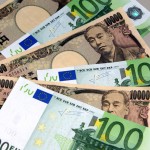The euro advanced to the strongest level in two months against the US dollar, after data showed the inflation rate in the euro zone accelerated at a faster-than-expected pace in February, relieving concerns that ECB may ease monetary policy at its meeting next week in order to stimulate the economy.
EUR/USD hit a session high at 1.3813 at 10:25 GMT, after which the pair consolidated at 1.3802, adding 0.67% for the day. Support was likely to be received at February 27th low, 1.3643, while resistance was to be encountered at December 30th high, 1.3819.
Eurostat reported today that the cost of living in the euro area grew at an annualized rate of 0.8% in February, the same as in the previous month and exceeding analysts projections for a 0.7% increase. Todays data is preliminary and the final figures for February are scheduled to be released on March 17th.
At the same time, core consumer prices, which exclude volatile items such as food, energy, tobacco and alcohol increased at an annualized rate of 1% in February, exceeding experts forecasts for a 0.8% advance and up from Januarys 0.8% increase.
The inflation figure “shows that there is no threat of fully fledged deflation,” Carsten Brzeski, an economist at ING Group NV in Brussels, said in a Bloomberg interview. “The situation has not worsened, which also means right now that there’s no imminent reason for the ECB to act again.”
A separate report showed the jobless rate in the 18-nation common currency area remained unchanged at 12% in January, in line with analysts estimates and close to a record high.
However, annual inflation remains less than half the ECB target of just below 2%, registering a a fifth straight reading under 1%, which was referred by ECB President Mario Draghi as a danger zone.
On February 6, the ECB President Mario Draghi refrained from taking action to counter low inflation, but said “we are willing and we are ready to act” as soon as March, when more euro zone data will be available. His comments came after the ECB left its benchmark interest rate at a record-low 0.25%.
ECB policy makers are set to reconvene on March 6th, when the central bank is expected to publish its quarterly macro-economic forecasts, which will provide first inflation predictions for 2016 and based on that to take its interest rates decision.
Meanwhile, Federal Reserve Chair Janet Yellen said that the central bank will probably continue with its plan to gradually reduce the scale of monthly asset purchases, while policy makers are trying to determine whether the weakness economy has recently demonstrated is due to temporal factors.
“Unseasonably cold weather has played some role,” she said in her testimony in front of the Senate Banking Committee on Thursday. “What we need to do, and will be doing in the weeks ahead, is to try to get a firmer handle on exactly how much of that set of soft data can be explained by weather and what portion, if any, is due to softer outlook.”
Yellen indicated that the Federal Reserve is abandoning its numerical threshold, that has linked any decision to increase borrowing costs to nation’s rate of unemployment. She also reiterated what the central bank has already said in a number of statements – that the scale back of monetary stimulus will continue at a “measured pace”, while the bond-purchasing program will likely be exited in the fall.
In addition, the Department of Commerce said yesterday that US durable goods orders, fell 1% in January, following a revised 5.3% drop in the previous month. Analysts had anticipated that bookings for durable goods or those meant to last at least three years will decline 1.7% last month.
Orders for durable goods, which exclude volatile transportation items, rose 1.1% in January, confounding experts’ forecasts of a 0.3% drop. December’s core durable goods orders have been revised down to a 1.9% decline from a previously estimated 1.6% drop.
A separate report revealed that the number of initial jobless claims in the United States rose by 14 000 to reach 348 000 during the week ended on February 22nd, while analysts had projected a decline to 335 000. This higher-than-expected number of Americans, who filed for unemployment benefits last week, boosted concerns that nation’s labor market is demonstrating an uneven recovery.
Elsewhere, USD/JPY hit a session low at 101.56 at 04:55 GMT, after which the pair traded at 101.71 by 09:58 GMT, losing 0.41% for the day. Support was likely to be found at February 17th low, 101.39, while resistance was to be met at February 27th high, 102.45.





